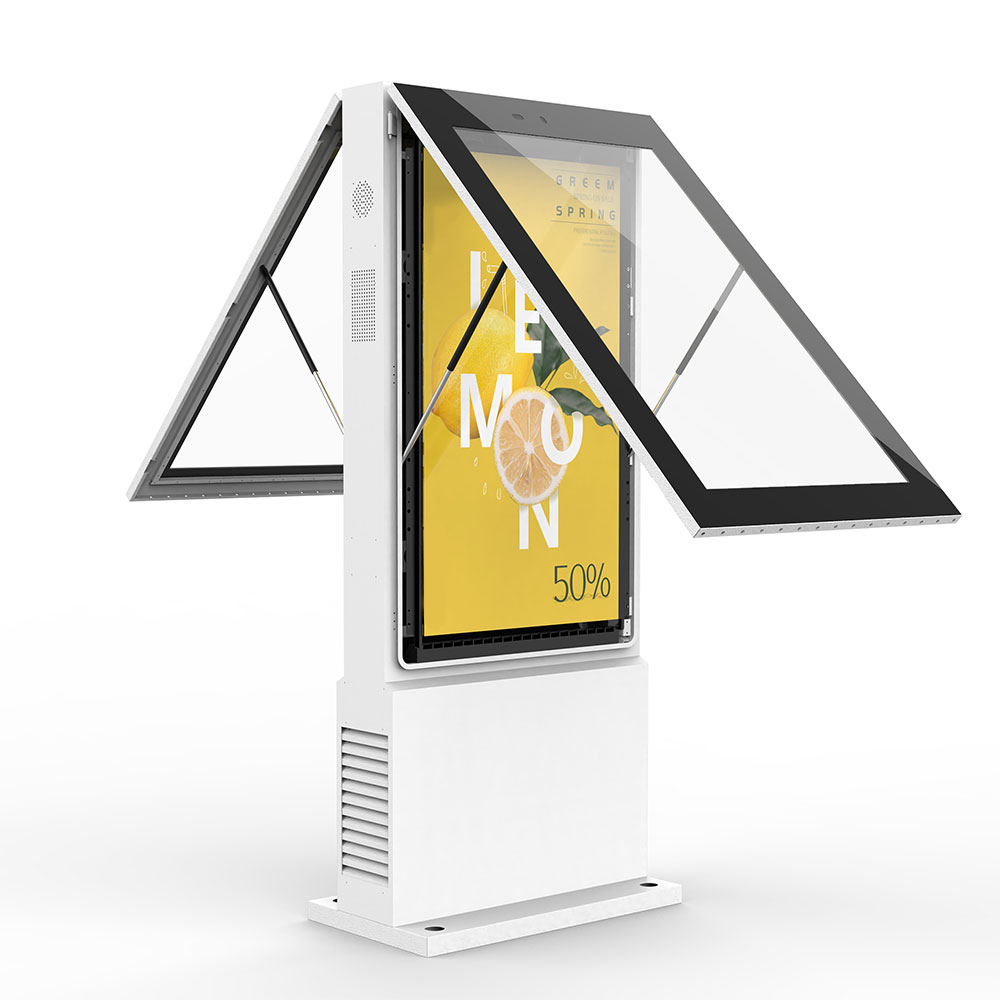Green Power Solutions: Harnessing Solar Panels and Energy-Efficient Designs for Outdoor Digital Kiosks
Outdoor digital kiosks are becoming increasingly popular as they provide various services like information, wayfinding, and advertising. To ensure their functionality, these kiosks need to have a reliable power source. There are energy-efficient designs and power sources such as solar panels and battery systems that can be used to minimize costs and environmental impact. In this analysis, we'll explore these options and their energy requirements.
### Energy Requirements
The energy requirements for an outdoor digital kiosk depend on factors like the size of the display, the brightness level, the type of display technology, and the overall power consumption of the system. Here are some common power consumption values for different components:
1. Display: 100 - 300 watts (Depending on size, brightness, and technology)
2. Computer and peripherals: 50 - 100 watts
3. Heating and cooling systems: 100 - 300 watts (If required)
Considering these values, an outdoor digital kiosk may require anywhere from 250 to 700 watts of power. To ensure continuous operation, it's important to account for any fluctuations in power usage and have a buffer.
### Solar Panels
Solar panels can be an excellent power source for outdoor digital kiosks as they provide clean, renewable energy. The size of the solar panel array required depends on the energy requirements of the kiosk and the available sunlight. Here's a simple calculation to estimate the size of the solar array:
1. Determine the daily energy requirements: Energy required (Wh) = Power consumption (W) x Hours of operation per day (h)
2. Calculate the solar panel output: Solar panel output (Wp) = Daily energy requirements (Wh) / Peak sun hours per day (h)
3. Estimate the number of solar panels: Number of solar panels = Solar panel output (Wp) / Power rating of each solar panel (W)
### Battery Systems
A battery system is essential for an outdoor digital kiosk to store the energy generated by solar panels and ensure uninterrupted operation during nighttime and cloudy days. The size of the battery system depends on the desired runtime, power consumption, and the efficiency of the battery. Here's a simple calculation:
1. Determine the battery capacity: Battery capacity (Ah) = Daily energy requirements (Wh) / Battery voltage (V) x Days of autonomy (days)
2. Consider the battery efficiency (typically 80-90%): Adjusted battery capacity (Ah) = Battery capacity (Ah) / Efficiency factor
### Energy-Efficient Designs
To minimize energy consumption, outdoor digital kiosks should incorporate energy-efficient designs and technologies. Some possibilities include:
1. Using LED or OLED displays, which consume less energy compared to traditional LCD displays
2. Implementing intelligent brightness control systems that adjust the display brightness based on ambient light conditions
3. Utilizing low-power computing components and peripherals
4. Incorporating efficient thermal management systems to reduce heating and cooling energy requirements
5. Implementing sleep or low-power modes when the kiosk is not in use

In conclusion, outdoor digital kiosks can benefit from using solar panels and battery systems as their power source. To optimize energy efficiency, it's essential to incorporate energy-efficient designs and technologies in the kiosk. Proper planning and sizing of the solar array and battery system will ensure continuous operation with minimal environmental impact.
